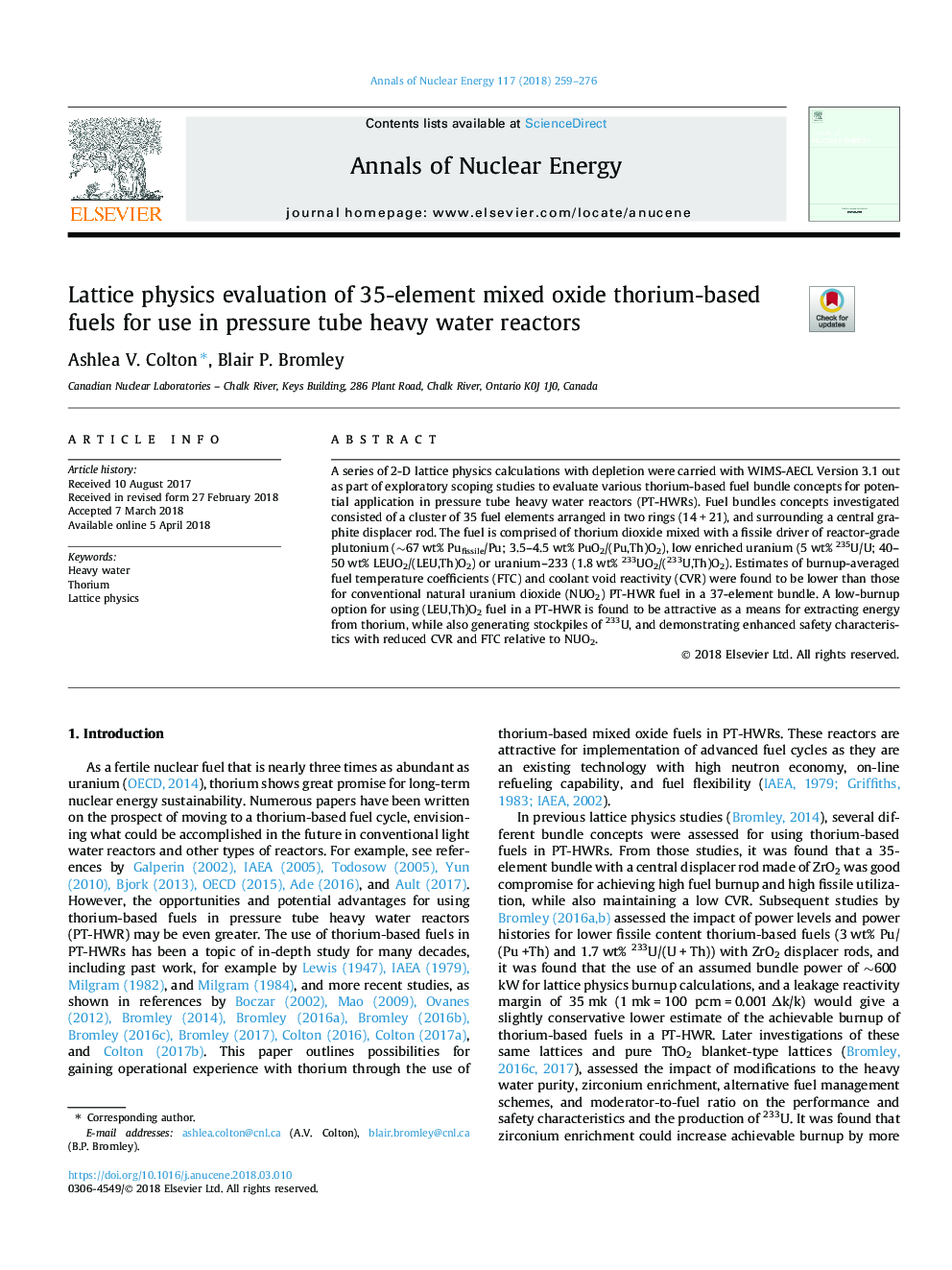| Article ID | Journal | Published Year | Pages | File Type |
|---|---|---|---|---|
| 8067015 | Annals of Nuclear Energy | 2018 | 18 Pages |
Abstract
A series of 2-D lattice physics calculations with depletion were carried with WIMS-AECL Version 3.1 out as part of exploratory scoping studies to evaluate various thorium-based fuel bundle concepts for potential application in pressure tube heavy water reactors (PT-HWRs). Fuel bundles concepts investigated consisted of a cluster of 35 fuel elements arranged in two rings (14â¯+â¯21), and surrounding a central graphite displacer rod. The fuel is comprised of thorium dioxide mixed with a fissile driver of reactor-grade plutonium (â¼67â¯wt% Pufissile/Pu; 3.5-4.5â¯wt% PuO2/(Pu,Th)O2), low enriched uranium (5â¯wt% 235U/U; 40-50â¯wt% LEUO2/(LEU,Th)O2) or uranium-233 (1.8â¯wt% 233UO2/(233U,Th)O2). Estimates of burnup-averaged fuel temperature coefficients (FTC) and coolant void reactivity (CVR) were found to be lower than those for conventional natural uranium dioxide (NUO2) PT-HWR fuel in a 37-element bundle. A low-burnup option for using (LEU,Th)O2 fuel in a PT-HWR is found to be attractive as a means for extracting energy from thorium, while also generating stockpiles of 233U, and demonstrating enhanced safety characteristics with reduced CVR and FTC relative to NUO2.
Keywords
Related Topics
Physical Sciences and Engineering
Energy
Energy Engineering and Power Technology
Authors
Ashlea V. Colton, Blair P. Bromley,
